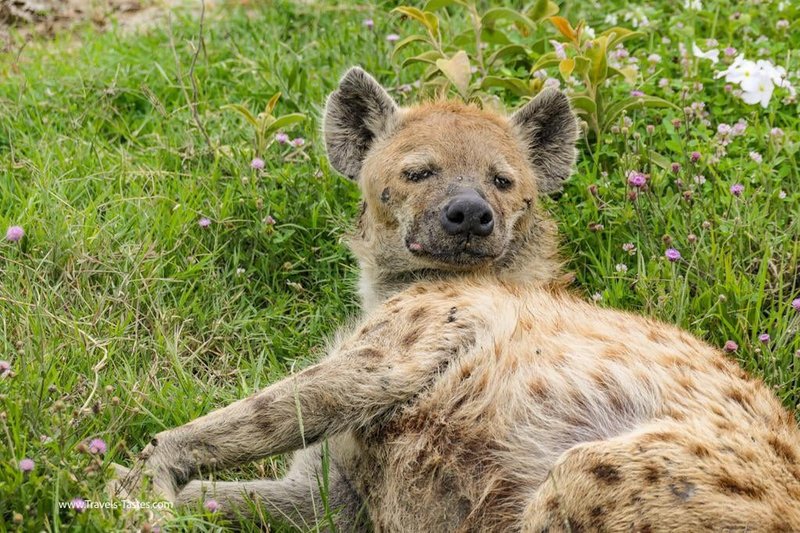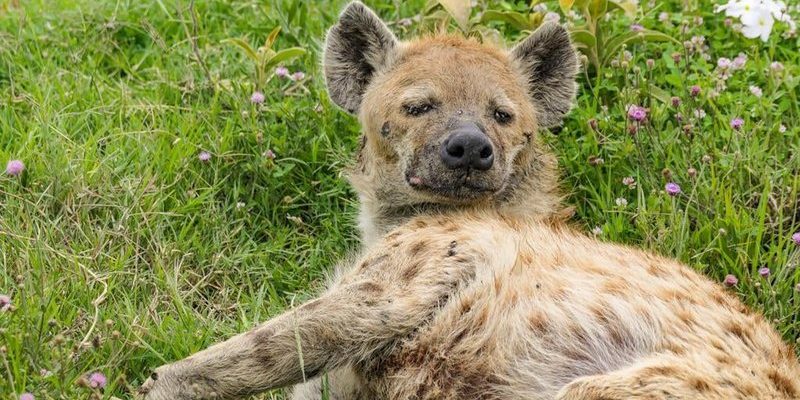
Think of it like walking into a coffee shop where you aren’t familiar with the menu. You don’t want to order something you’ll regret, right? The same goes for an encounter with a hyena. You want to understand how to act, how to stay safe, and maybe even how to appreciate these fascinating animals from a respectful distance. Let me explain what you need to know.
Understanding Hyenas: More Than Just Laughs
Hyenas are often misunderstood. While they’re known for their distinctive cackling sounds, they’re actually intelligent and social animals. There are four species of hyenas: the spotted, striped, brown, and aardwolf. Among these, the spotted hyena is the most famous due to its size and vocalizations. But wait, they’re not just the villainous sidekick you might associate with cartoon characters. In the wild, spotted hyenas are skilled hunters with complex social structures.
Hyenas live in groups called clans, which can consist of up to 80 individuals. These clans have a strict hierarchy, and the females are generally larger and more dominant than the males. Isn’t that intriguing? While many may think of them as mere scavengers, they actually hunt around 50% of their food. So, if you encounter a hyena, remember: you’re not just seeing a scavenger; you’re looking at a formidable predator.
What to Do If You Spot a Hyena
Seeing a hyena, especially in the wild, can be a mix of excitement and fear. The first thing to remember is to stay calm. Hyenas are more curious than aggressive. If you spot one, observe from a safe distance. Resist the urge to approach or make loud noises—it could provoke a defensive behavior. Instead, keep your voice low and steady, and try to enjoy the moment.
Here’s how to safely observe a hyena:
- Stay at a Distance: Use binoculars or a camera with a zoom lens for a closer look.
- Remain Quiet: Sudden movements or loud noises might scare or agitate the animal.
- Don’t Feed Them: This can alter their natural behavior and lead to dangerous situations.
If the hyena seems unaware of your presence, that’s a good sign. But if it begins to approach, it’s time to reassess your position.
Recognizing Signs of Aggression
While hyenas typically avoid humans, it’s crucial to know the signs of aggression. Recognizing these can help you avoid a potentially dangerous encounter. Look for these behaviors:
- Growling or Hissing: These are clear warnings that the hyena feels threatened.
- Stiff Body Posture: If the hyena stands rigid, it might be ready to defend itself.
- Exposing Teeth: This can be a sign of aggression, especially if accompanied by vocalizations.
If you notice any of these signs, it’s best to back away slowly. Don’t turn your back on the hyena or run. Quick movements might trigger a chase response. Instead, keep your eyes on the hyena and move away calmly.
Safety Tips for Hiking in Hyena Territory
Planning a hike in areas known for hyena populations? You’ll want to take some extra precautions. Here are some tips to enhance your safety:
- Travel in Groups: There’s safety in numbers. Hyenas are less likely to approach larger groups.
- Keep Food Stored Properly: Use bear canisters or sealed bags to avoid attracting them with smells.
- Stay on Designated Paths: This reduces the chances of an unexpected encounter.
One time, a friend and I were hiking in a wildlife reserve when we caught a glimpse of a hyena. We instantly remembered to stay in our group and keep our snacks tucked away. It was an exhilarating experience, safely observing the hyena from a distance and enjoying its natural behavior without interference.
Responding If a Hyena Approaches
If a hyena approaches you, don’t panic. Here’s what you should do:
1. Stand Your Ground: Don’t run. Hyenas can run fast and will chase a fleeing target.
2. Make Yourself Look Bigger: Raise your arms and speak firmly. This can be enough to deter the animal.
3. Retreat Slowly: If the hyena doesn’t back off, move away slowly while keeping your eyes on it.
Remember, a hyena’s primary goal is to avoid confrontation. Most encounters end peacefully if you don’t provoke the animal.
Understanding Hyena Behavior
Hyenas have fascinating social structures and behaviors. Their communication is complex, using vocalizations, body language, and even scent marking. Understanding these behaviors can enhance your experience and safety. For instance, a chuckle from a hyena may signal excitement or a call for attention from others in the clan.
Hyenas are also known for their intelligence. They have problem-solving skills that can rival those of primates. Learning how to interpret their behavior can turn an encounter into a learning moment.
Enjoying Hyena Encounters Safely
While those encounters can be nerve-wracking, they also offer unique insights into wildlife and nature. Here are some tips to enjoy your hyena sightings safely:
- Join Guided Tours: Experienced guides can offer valuable insights into behavior and ensure your safety.
- Take Photos Respectfully: Capture the moment without intruding on the animal’s space.
- Educate Yourself: Read about hyena ecology to appreciate their role in the ecosystem.
One of my most memorable moments was watching hyenas in the twilight, hearing their eerie calls echo around us. By keeping a safe distance and respecting their space, we left with a newfound appreciation for these captivating creatures.
In Conclusion
Encountering a hyena in the wild can be an unforgettable experience. It’s a chance to see nature in action, but it comes with its own set of responsibilities and precautions. By understanding hyena behavior and knowing how to respond, you can safely navigate these encounters. Just remember to stay calm, respect their space, and enjoy the wild world around you. There’s a lot to learn from nature’s less conventional inhabitants, and a thrilling adventure awaits in the heart of the savanna!

